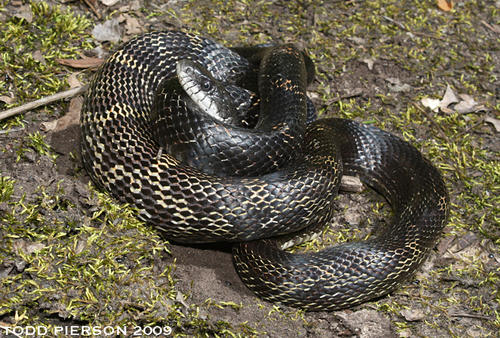
Gray Ratsnake
The Gray Ratsnake (Pantherophis spiloides) slithers through North America's forests and farmlands, expertly climbing trees. Its striking gray pattern helps camouflage while it keeps rodent populations in check, showcasing nature's balance and the snake's ecological importance.
15-20 years
Lifespan
Least Concern
Conservation Status
Unknown
Population Trend
Distribution Range of the Gray Ratsnake
Pantherophis spiloides, commonly known as the gray rat snake or central rat snake, is native to the eastern and central United States. Its geographical distribution includes parts of the Midwest and Southeast, extending from southern Illinois to Indiana, Ohio, and southwards through the Gulf Coast states to northern Florida and eastern Texas.
Gray Ratsnake's Habitat
Environmental Conditions
The gray rat snake typically inhabits a variety of environments that include mixed hardwood and pine forests, forest edges, swamps, and areas near streams or rivers. The species is often found in farmlands and rural areas with ample rodent prey.
Ecological Niche
As a non-venomous constrictor, the gray rat snake plays a crucial role in controlling rodent populations. It is a habitat generalist with a high level of adaptability, which allows it to thrive in diverse environments, including altered landscapes. The species is known to climb trees and is often found in barns or attics, searching for small mammals and birds.
Copyright @ Nature Style Limited. All Rights Reserved.
 English
English